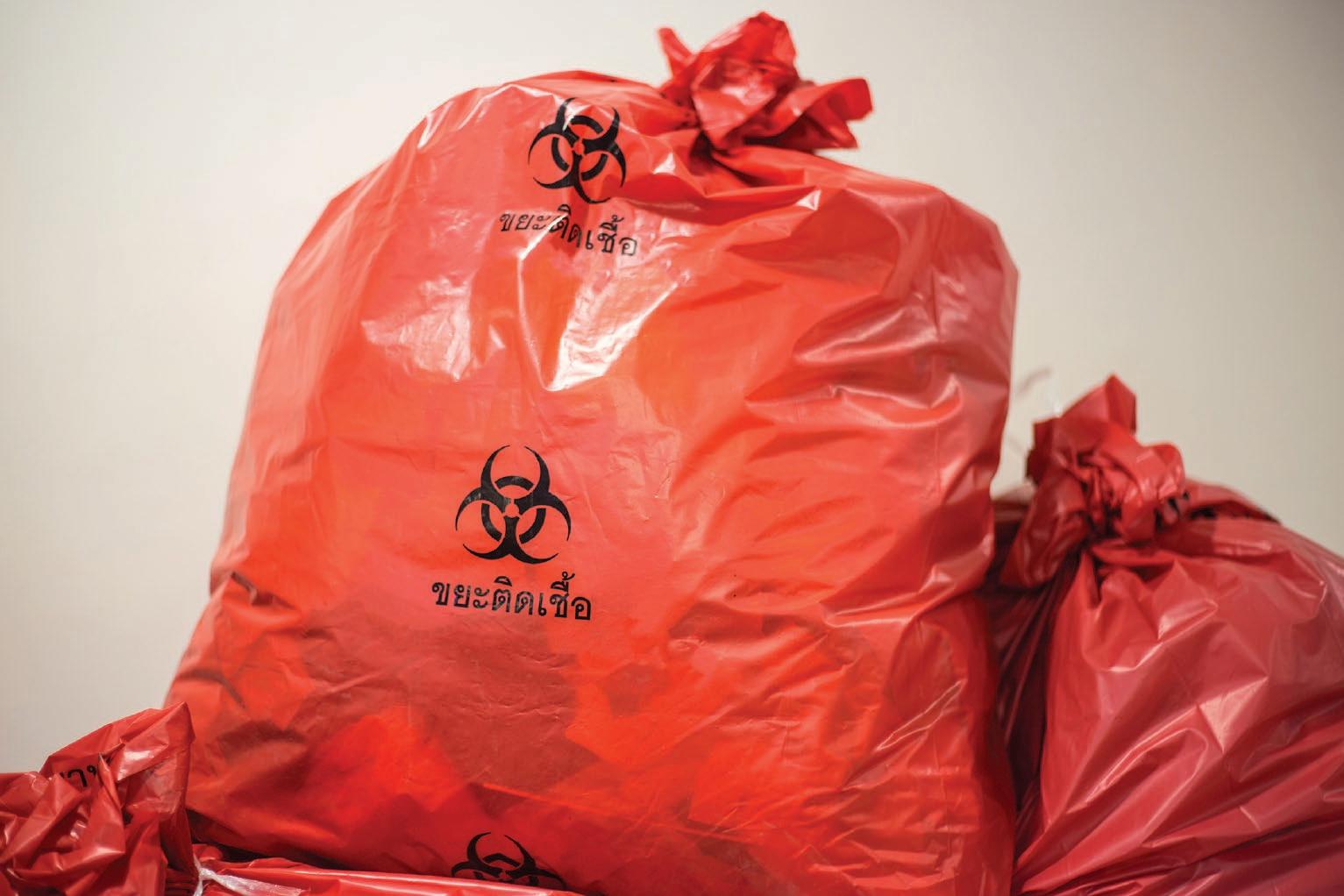
5 minute read
Getting the Right Device
from Hospital Reports – Preventing Needle Stick Injuries and the Role of Safety Devices – Owen Mumford
John Hancock, Editor
Device safety and control are essential elements in the administering of injections
We’ve now considered needlestick injuries, how to treat and how to avoid them through regulation of the injection process and careful procedures. But, as Peter Dunwell suggested at the end of the previous article, the other significant way in which safety can be built into the injection process is in the design of the devices. So, let’s have a look now at the devices and what is being done to make them safer and more effective.
Engineering Safety into the Device
When an injection device has safety engineered in to the device, that is often some sort of shielding either of a sort that can be removed by the user, usually a healthcare professional (HCP) who is administering the injection, or of a sort that retracts when the device is pressed against the patient’s skin so that, before and after the injection, the actual needle is shielded. Cision PR Newswire 60 citing the survey ‘Safety Pen Needles – Take Control’ reported, “practical challenges with passive safety pen needles, including premature activation of the safety mechanism before the injection has been completed leads to uncertainty as to whether the full medication dose is delivered to the patient.” There was no doubt that passive safety pen needles improve safety against needlestick injuries (NSIs) but in the same survey respondents felt that a combination of safety and control during the injection process were equally important.
This blend of safety and function becomes more important when patients are administering their own drugs such as diabetics administering insulin. Pharmacy Times 61 relayed, “a recently hospitalized patient with type 1 diabetes did not know to remove the standard needle cover from the standard insulin pen needle prior to administration. She was unaware that she was using the pen incorrectly and, thus, had not been receiving any of her insulin doses. The patient developed diabetic ketoacidosis and later died.” So, a good design is one that is able to meet both the need for patient and HCP safety as well as observably completing the injection process and giving the administrator full control over the process.
Going a little more granular, Healthcare Purchasing News 62 notes, “Healthcare professionals who use passive safety pen needles have reported that design flaws often make it difficult to deliver a consistent standard of care to their patients. Hidden needles and premature activation are common concerns. Additionally, a study in the Journal of Hospital Infection revealed that injection pen use correlates with a higher rate of NSIs among healthcare professionals who give injections.” Add to that that there are several brands of injection pens with which any safety needle needs to be compatible.
Some important safety and control factors that have been identified in a number of surveys and reviews are that the needle should be visible throughout the injection process to ensure control, that there should be a means for the user to know when the safety mechanism is active and correctly timing the activation and dosage dispensed.
Key Considerations When Choosing Passive Safety Pen Needles
Unsurprisingly, the key considerations are mainly in respect of the requirements already listed. So, it will be important to know that the needle conforms to standards for the jobs it will have to do and that its operation is reliable, that it is easy to use and safe.
Essentially, users, whether healthcare professionals or patients, should not have to compromise between safety and function, delivering the required dose. The wrong dose can be more than simply inconvenient. Some drugs are effective over a very narrow therapeutic range which is gauged for each case. For example, inappropriately low doses of insulin can cause excessive levels of glucose in the blood (hyperglycaemia). This can result in a condition called ketoacidosis, which can lead to coma, swelling of the brain and even prove fatal. Conversely, inappropriately high doses of insulin can lead to low blood glucose levels
(hypoglycaemia). Low blood glucose levels can cause numerous complications including nausea, falls and seizures. And part of that safety requirement is that, as the UK Health and Safety Executive (HSE) 63 explains, “the care-giver should be able to maintain appropriate control over the procedure.”
Caring for the Carers: Clinician Safety
The processes and regulations covered have been well-established in the healthcare sector but this year, 2020, and the Covid-19 pandemic has added a whole new aspect to healthcare, that of personal protective equipment (PPE). Medical Life Sciences News 64 reports that, “93% of UK surgeons think that high quality gloves reduce the chance of exposure to blood borne viruses... 92% agreed that clinician safety in the operating theatre was improved though the use of high-quality gloves.” Certainly, Nursing Times 65 confirms that, “Expert opinion agrees that the two main indications for the use of gloves in preventing HCAI (Pratt et al, 2001; Clark et al, 2002) are to protect hands from contamination with organic matter and microorganisms, and to reduce the risks of transmission of microorganisms.”
The Future Outlook
For a variety of reasons including the growing prevalence of diabetes and other chronic diseases, the use of pen needles is growing year on year with Markets and Markets 66 reporting
that, “The pen needles market is expected to reach USD 1.8 billion by 2024 from an estimated USD 1.1 billion in 2019, at a CAGR of 10.8% during the forecast period.” In these circumstances and given the high cost when things go wrong (see first article ‘Sharps and needle stick injuries), the safer and more effective a device can be, the better. A good design is one that is able to meet both the need for patient and HCP safety as well as observably completing the injection process and giving the administrator full control over the process






